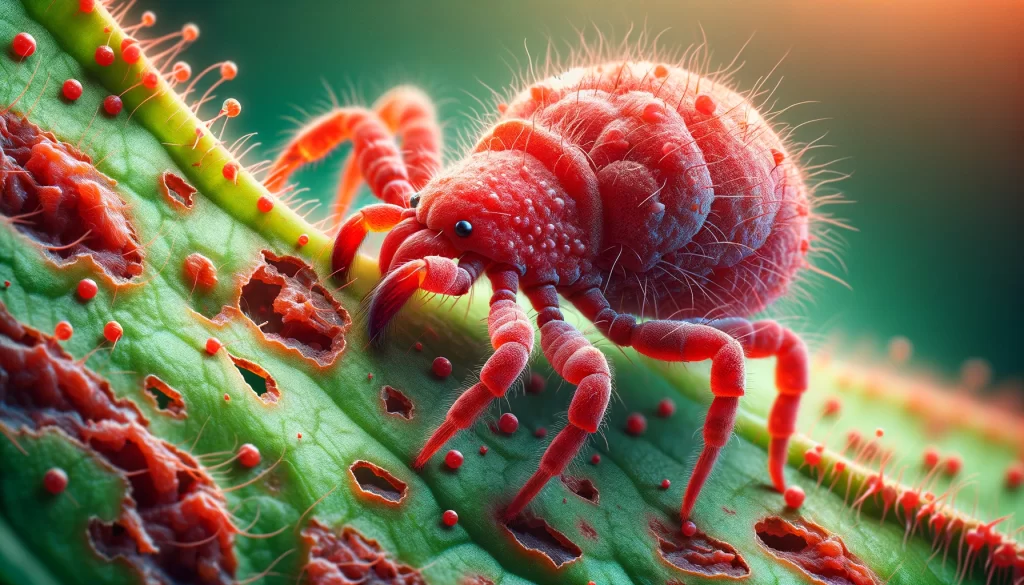Introduction: In the realm of crop protection, one of the smallest yet most destructive adversaries is the red spider mite, scientifically known as Tetranychus spp. This mite, often unnoticed until damage is visible, can wreak havoc on a variety of plants. Let’s delve into how to recognize, prevent, and control this tiny yet formidable foe.

Red Spider Mite Profile: The red spider mite is a tiny mite, red or yellow in color, difficult to see with the naked eye. These mites feed on the underside of plant leaves, sucking their cellular contents and leaving behind visible damage.

Vulnerable Crops: This mite is non-selective and can infest a wide range of plants, from vegetables and fruit trees to ornamental plants. Among the most commonly affected crops are tomatoes, cucumbers, roses, and strawberries.

Signs of Infestation and Damage:
- Leaf Damage: Infested leaves show pale or yellowish spots. Over time, they may turn completely yellow and fall off.
- Thin Webs: In severe infestations, red spider mites produce thin webs to protect their colonies.
- Yield Reduction: Intensive feeding by these mites can significantly weaken plants, reducing their growth and yield.

Control Strategies:
- Regular Monitoring: Early detection is vital. Regularly inspecting the underside of leaves can help identify an infestation in its early stages.
- Environmental Control: Red spider mites thrive in dry, warm conditions. Maintaining proper humidity can help deter their establishment.
- Natural Enemies: Predatory mites like Phytoseiulus persimilis can be effective in biological control of red spider mites.
- Chemical Control: In extreme cases, specific acaricides can be used. However, rotating products and using them cautiously are essential to avoid resistance and harm to beneficial organisms.
- Crop Sanitation: Removing affected plants and crop residues can reduce the spread of these mites.

Conclusion: The red spider mite, despite its size, poses a considerable threat to a variety of crops. An integrated approach combining cultural practices, biological and chemical control, tailored to the specific needs of each plant, is crucial to keep these small yet destructive mites at bay. Constant vigilance and preventive measures are essential to protect our crops from their damage.
 AgronoBlog – Agriculture Blog
AgronoBlog – Agriculture Blog